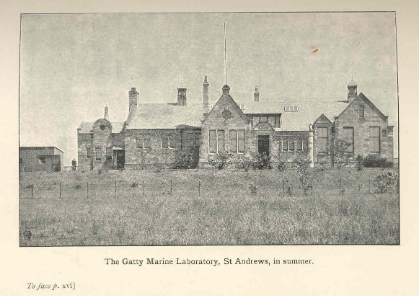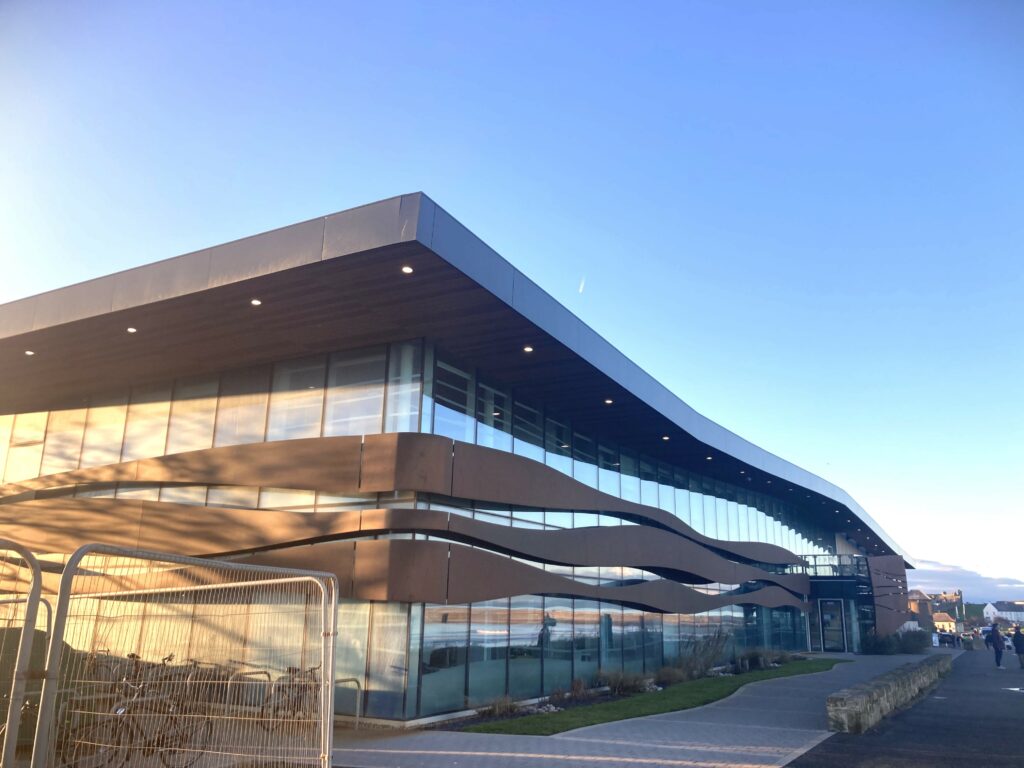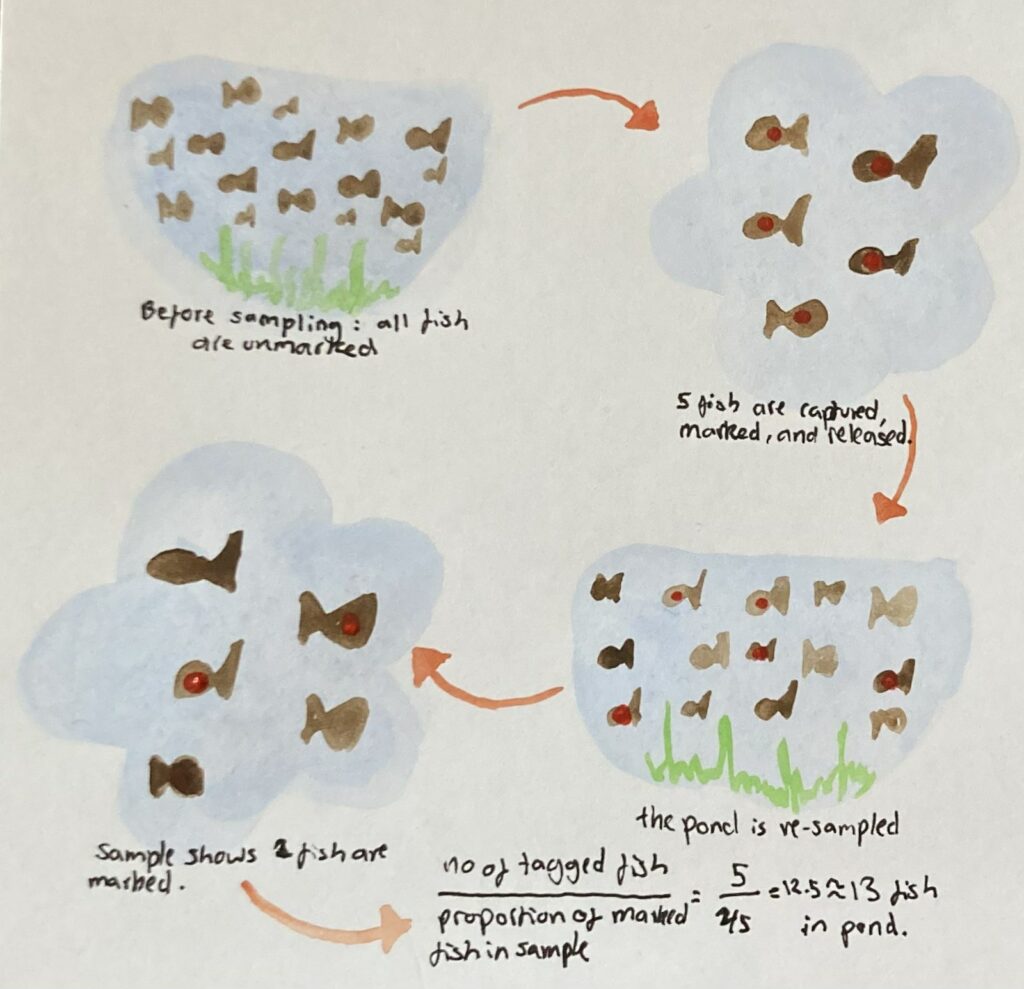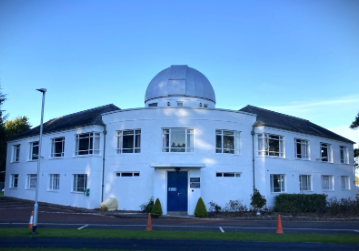St Andrews’ Importance in Mathematical Ecology
Ecology is a very important field in the current day. With an increasing need to protect our biodiversity and climate, it has never been more vital. But the town of St Andrews actually has a long history in the field, and is the home of many mathematical developments in the area.

Image credit: The Freshwater and Marine Image Bank, public domain via Wikimedia Commons.
The Gatty Marine Lab
The Gatty Marine Lab is the first step in looking at ecology in St Andrews. It has its origins in the St Andrews Fisheries Laboratory, which was based in a temporary wooden structure, and founded in 1884. It was reopened as a more permanent structure in 1896, funded by Charles Henry Gatty. It was named the Gatty Marine Lab, and William Carmichael MacIntosh was appointed as director. The work subsequently done here was an important contribution to development of fisheries science in the UK.
MacIntosh and D’arcy
MacIntosh was one of the biggest figures in ecology in the area. His work, together with that of D’arcy Wentworth Thompson (see below), provides a foundation for future ecological work, especially in St Andrews.
Around the time the Gatty was opened, St Andrews University included a campus in Dundee. In 1884 D’Arcy Thompson was appointed to the Chair of Biology in Dundee. From then on D’Arcy and MacIntosh were in contact with each other, and while it was observed that they had their clashes and were in some ways complete opposite characters, they were nonetheless both very influential in their respective fields.
Whilst working in Dundee, D’Arcy became interested in how biology can be linked with maths and physics. It is thought that this interdisciplinary approach could have been inspired by the fact that Dundee College was very small at the time, creating a more collaborative atmosphere in a time when science was only getting more specialised. When he was approached about writing a book about whales, he seized his chance and responded that he instead wanted to write about his new idea. This is how his most famous work came to be: ‘On Growth and Form’. In it, he wrote about the growth and development of living organisms, comparing them to non-organic objects, and how they are influenced by the fundamental laws of maths and physics. It was some very influential work and has led to D’Arcy being regarded as the ‘first’ biologist-mathematician.
In 1917 D’Arcy succeeded MacIntosh as professor of Natural History in St Andrews. During his 64 years in this position, D’Arcy was known as a larger than life, outgoing character who inspired many. He was even known to wander the streets of St Andrews with a parrot on his shoulder!
How the Marine Lab became home to the Sea Mammal Research Unit
Around the time of MacIntosh’s death, the Gatty Marine Lab had been closed due to a fire. It remained closed until 1946, when it was reopened with a budget of £50 (the equivalent of over £2500 today). It was mostly used by zoologists and botanists but the laboratory began to specialise in experimental biology in the 1950s, specifically looking at marine life. The Natural Environment Research Council (NERC) occupied much of the building’s space as well. NERC is the UKs main agency for funding research into the natural sciences, and it established the Sea Mammal Research Unit (SMRU) in 1978 by merging its seals research division and a whale research unit. SMRU was originally based in Cambridge, but moved to the Gatty Marine Lab in 1996, becoming a research group in the University of St Andrews, where it remains today. There has also been a commercial branch known as SMRU consulting since 2006, which bridges the gap between the academic and the commercial worlds.

Image credit: public domain via Jessica Casey.

Image credit: Jessica Casey
Statistical Ecology at the University of St Andrews
Statistical ecology took off in St Andrews with Richard Cormack. He became the first Professor of Statistics at St Andrews in 1972. His main field of research was the theory of mark-recapture, of which he has been very important in developing. Mark-recapture is a technique used to estimate the size of a population when it is impractical to try and count each one. It involves marking some of the population, and releasing them back into the wild. Later, a group of the animals are collected again, and the total population size can be estimated using what proportion of the new group are marked.
Cormack stayed in that position full-time until Stephen Buckland was appointed in 1993, and then part-time until 1994. Stephen has a background in maths and statistics, but had an interest in Natural History from a young age. In the 90s he was creating a statistics group, and then in 1998 he proposed the creation of The Centre for Research into Ecological and Environmental Modelling (CREEM). CREEM became a licenced group in 1999 and received funding in 2001. At that time, a building in the St Andrews observatory became vacant, and CREEM moved in in 2002. When they first moved into the building, they couldn’t fill all the space, with about 20 members of staff. Today however, CREEM has grown, with about 40 people continuing the research today.

Image credit: public domain via Jessica Casey.
CREEM and SMRU- current research
Most people in CREEM are from a statistics background, but many disciplines are involved, including Biology, Geography, and Computer Science. Computer Science is a more recent addition, and shows how approaches are changing in the field. For example, there is a move towards using computers to interpret data collected about animals instead of relying on humans. Two of the main, and earliest, areas of research in the group are mark-recapture (hailing from Richard Cormack) and distance sampling, which is another way of estimating animal abundance and density. The range of the real-world impacts from these two areas of research is wide, from conservation efforts for animals such as porpoises and snow leopards, to work done in marine renewable energy. In addition, advances in machine learning and artificial intelligence have led to new innovative ways to collect data about animal abundance which will only lead to more vital impacts in the future.
SMRU also does very important, relevant research today. A lot of its research focuses on cetaceans (whales, dolphins, porpoises). One of its main aims is to determine how human’s activities affect marine populations worldwide. The group uses all sciences from molecular biology to physics, and their research areas are of great importance to understanding the oceans and the ecosystems within them.
SMRU and CREEM often work together, and advancements in one group are often inspired, encouraged, and required by the other group. Together they show just how important St Andrews is for advancements in ecology.
Author
Jessica Casey

